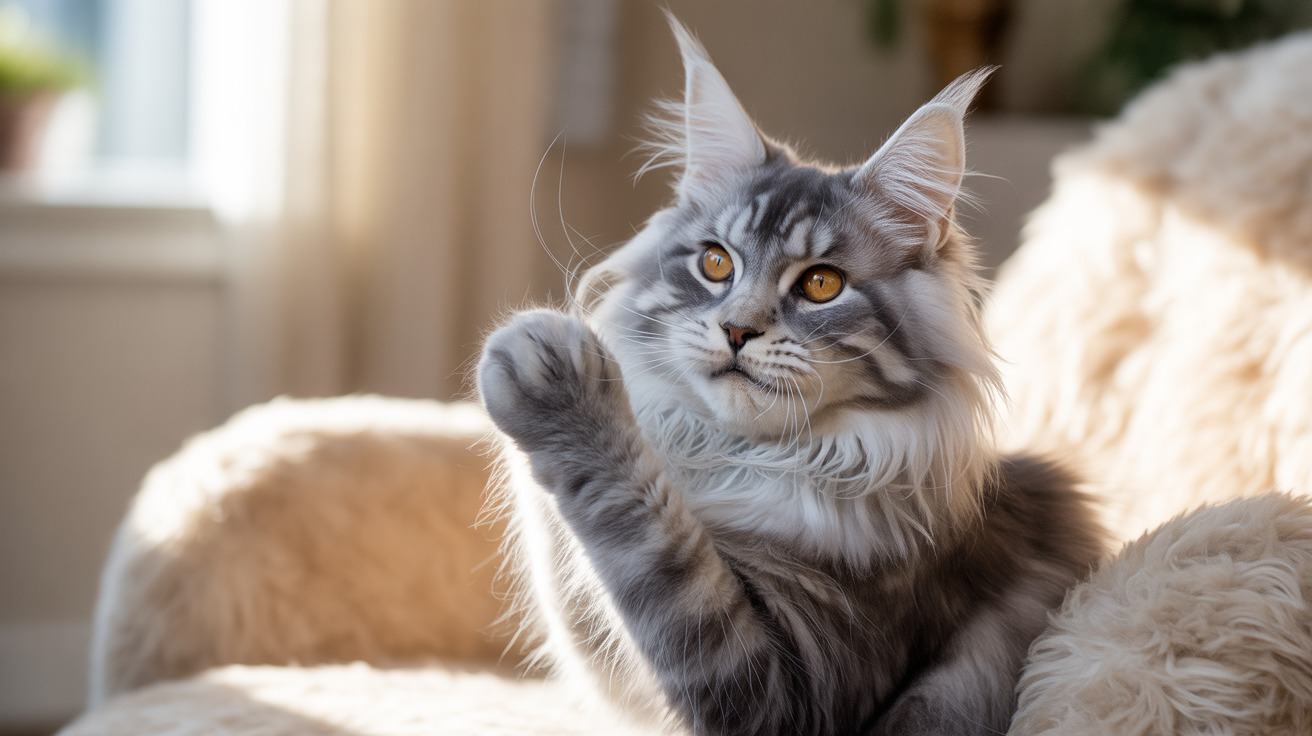When cats develop feline leukemia virus (FeLV), hair loss can be one of the many concerning symptoms that pet owners notice. This serious viral infection not only affects your cat's immune system but can also lead to various skin conditions and coat problems. Understanding the connection between feline leukemia and hair loss is crucial for early detection and proper care of affected cats.
In this comprehensive guide, we'll explore how FeLV impacts your cat's coat health, what signs to watch for, and how to manage this challenging condition effectively.
The Link Between Feline Leukemia and Hair Loss
While feline leukemia doesn't directly cause hair loss, the virus significantly weakens the immune system, leading to various conditions that affect coat health. Cats with FeLV often experience poor coat condition and hair loss due to secondary infections, nutritional deficiencies, and related health complications.
Common Causes of Hair Loss in FeLV-Positive Cats
Secondary Infections
FeLV-positive cats are particularly susceptible to bacterial and fungal skin infections that can cause patchy hair loss. These infections often occur because the cat's compromised immune system struggles to fight off common skin pathogens.
Parasitic Infestations
Fleas, mites, and other parasites can more easily establish themselves on FeLV-positive cats, leading to intense itching and subsequent hair loss from excessive scratching.
Nutritional Deficiencies
Poor appetite and decreased nutrient absorption, common in cats with FeLV, can result in dietary deficiencies that affect coat health and lead to hair loss.
Identifying FeLV-Related Hair Loss
Hair loss in FeLV-positive cats often presents differently from regular feline alopecia. Look for these distinctive signs:
- Symmetrical hair loss patterns
- Dull, brittle fur texture
- Poor overall coat condition
- Slow hair regrowth
- Associated skin infections or lesions
Treatment and Management Strategies
While there's no cure for FeLV, various treatment approaches can help manage hair loss and improve your cat's quality of life:
- Regular veterinary check-ups
- Prompt treatment of secondary infections
- High-quality nutrition supplementation
- Parasite prevention
- Stress reduction techniques
Prevention and Care Tips
Protecting your cat from FeLV and related complications requires a proactive approach:
- Keep cats indoors to prevent exposure
- Vaccinate at-risk cats against FeLV
- Maintain good hygiene practices
- Provide proper nutrition
- Schedule regular veterinary screenings
Frequently Asked Questions
What causes hair loss in cats infected with feline leukemia virus (FeLV)?
Hair loss in FeLV-infected cats primarily occurs due to secondary infections, compromised immunity, nutritional deficiencies, and stress. The virus itself doesn't directly cause hair loss but creates conditions that lead to poor coat health.
How can I tell if my cat's hair loss is related to feline leukemia or another skin condition?
FeLV-related hair loss often occurs alongside other symptoms such as lethargy, poor appetite, and recurring infections. A veterinary examination and blood test are necessary for accurate diagnosis.
Can feline leukemia virus directly cause hair loss, or is it mainly due to secondary infections?
FeLV typically causes hair loss indirectly through secondary infections, immune system suppression, and overall poor health. Direct hair loss from the virus itself is rare.
What are the common symptoms of feline leukemia virus besides hair loss that I should watch for?
Common symptoms include weight loss, lethargy, pale gums, fever, enlarged lymph nodes, recurring infections, and digestive issues. Early detection of these signs is crucial for proper management.
How do veterinarians diagnose FeLV in cats, and what treatments can help manage hair loss and related symptoms?
Veterinarians diagnose FeLV through blood tests, including ELISA and IFA tests. Treatment focuses on managing symptoms through antibiotics for secondary infections, proper nutrition, stress reduction, and supportive care.
Conclusion
While feline leukemia-related hair loss can be distressing, understanding its causes and proper management can help improve your cat's comfort and quality of life. Regular veterinary care, proper nutrition, and vigilant monitoring of symptoms are essential for caring for cats affected by this condition.





